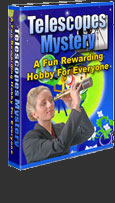
 |
Download FREE "Mystery of Telescopes" Ebook Now! - What do you really want to do with your telescope?
Just type in your name and email address below and we'll send you the ebook instantly |
Using a Telescope
Most people today don’t know the art of using a telescope.
If you think that you are the only one who doesn’t know how to use
a telescope, then you are wrong.
Most of the people today don’t know who to use telescope, even if they are considering astronomy as their favourite hobby.
Well, learning the use of telescope is not a difficult task. It won’t take longer to learn how to use the telescope. All what is required is some minor adjustments and knowing some of the specifications of your telescope.
Before you begin using your telescope, you should know about different parts of your telescope. The use of telescope is not that difficult if you know your telescope well.
There are not many things that you need to know about your telescope. First of all, you would need to know whether your telescope has a polar axis or not. You must know the presence or absence of a polar axis in your telescope.
A telescope that has a polar axis has something which is also called
as Alt-Az. Don’t get afraid if you don’t know what is Alt-Az.
Alt is the altitude or in other words is the distance above the horizon.
Az is also called as azimuth and it is the direction within a specific circle surrounding the horizon. You can skip your polar alignment step provided that you a mounted Alt-Az in your telescope.
The main purpose of the polar axis is to track stars. You should always make the polar axis of your telescope in line with the north direction. It is not necessary to keep it perfectly aligned with the north direction but try to make sure that its direction is very much close to the north.
There are some cases in which people often don’t know where is north. One simple solution to find the north direction is to use a magnetic compass.
After you have aligned your polar axis then comes the turn of the finder scope. Now you have to align the finder scope. The finder scope should be aligned in a way that it points to the thing that you see in the eyepiece of your telescope.
After you have done it, then you have found your target object. This task is considered to be one of the difficult tasks when learning how to use the telescope. There are many ways to make this task easy. For instance, if you can take any low power eyepiece then try it to find any brighter planet like the Jupiter or you can even try the moon as well.
Once you get that brighter object at the center of your eyepiece then immediately lock the drive, if you telescope tracks. After that you just have to do one thing; re-centering of the planet after some time.
The final step would be to look at the other scope; the finder scope. You will find a 3 thumb screw that would be holding your finder scope. Smoothly loosen that screw of the finder scope and look carefully into the eyepiece.
What you will looking is a X. You then have to try to align the planet or any other project in the centre of the X by using the screws. When this is done, it means that your finder scope is also completely aligned to see your objects of interest.
Remember that practice makes a man perfect. Try not to be afraid of the
telescope. Try to experiment with it. The more you use your telescope,
the more you will learn.
